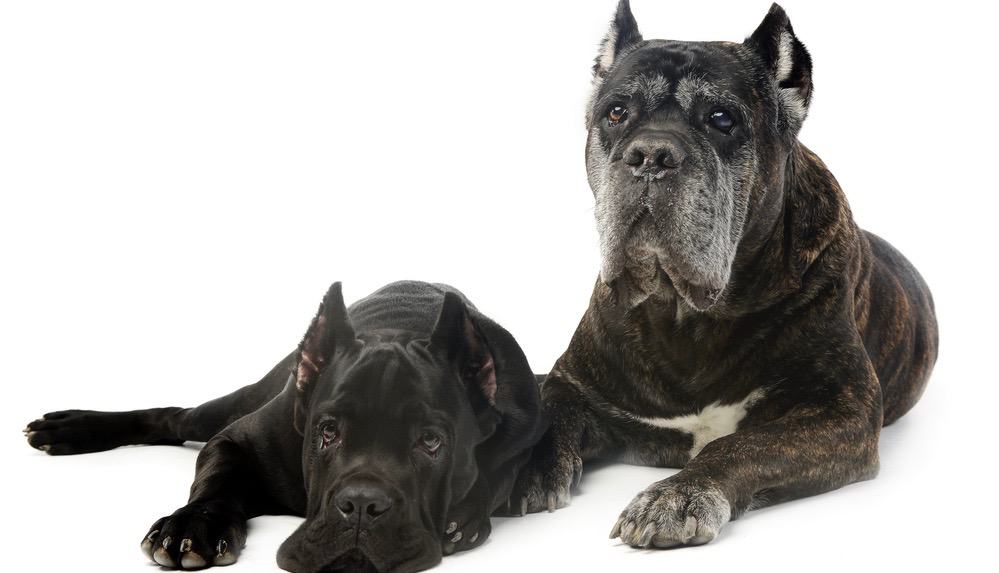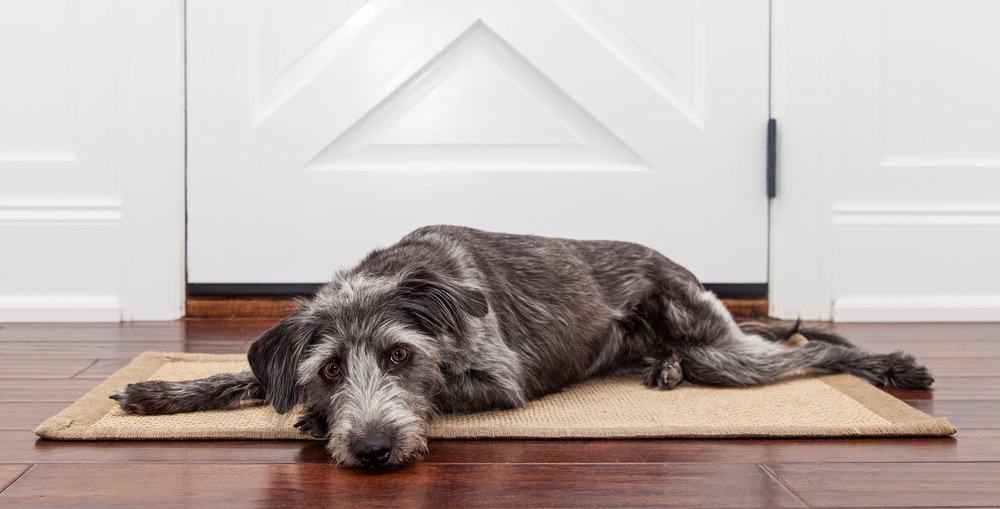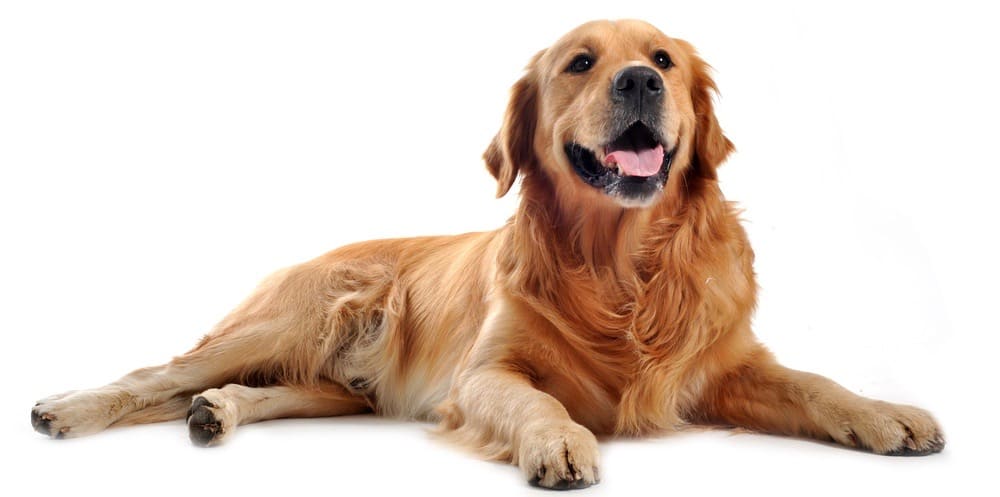Dog Chewing With Nothing In His Mouth – Dog Chewing On Tongue
Any dog owner can tell you that dogs will chew on things from time to time. But, if your dog is chewing with nothing in his mouth, you might become concerned that something else is going on.
When a dog makes odd movements with his mouth as if he is chewing something, there could be a few different things going on.
The first thing to do is to not panic. Some dogs even have nervous tics that might come off looking like random chewing.
Beyond just making the movement, a dog might appear to be chewing nothing because there is food stuck in his teeth, something might be in the roof of his mouth, there could be something in his throat, and there are many other potential causes to the movement.
If you cannot figure out why it is, remember that the best solution is to talk to your vet. Here’s what we know about it.
Take Into Account The Dog’s Age

The first thing to do is to take into account the age of your dog. If your dog is young and doing this with his mouth, then it is more likely to be food and nausea related, though not necessarily.
With an older dog, it might be a huge indication that there is something going on.
With an older dog, when the dog suddenly starts chewing without explanation or cause, it might be a sign that your dog is suffering from boredom or separation anxiety.
Without words to explain how he is feeling, chewing might be one way for him to express himself.
The movement may be a response to pain as well, so it might be an indication that something bigger and more serious is going on with your dog.
Age-related illness shouldn’t be ruled out either, so it would be good to ask yourself some questions, such as:
Has My Dog Slowed Down?
If your dog isn’t exercising as much as he used to, the chewing might be a sign that he is simply bored or understimulated.
This might be the case if you have had any major life changes recently, such as a change in work hours, additions to the household, or subtractions to the household, or even if you have moved recently.
If the dog is not getting as much attention as he did before, chewing might be his tension release.
If your dog has been injured and is recovering, the lack of exercise might be completely justifiable, but you still need to do something to keep the dog’s restlessness at bay.
Could My Dog Be Experiencing Separation Anxiety?
You might be thinking that this is impossible to develop later in life, but it should not be ruled out.

Sometimes dogs do develop separation anxiety as they age or if you were working at home, especially during pandemic lockdowns, and have now returned to the office, they might have noticed.
Hormonal changes can also cause an increase in anxiety, which may result in chewing behaviours.
Has Your Dog Stopped Eating?
Finally, ask yourself whether your dog has stopped or slowed down with his eating. If he isn’t eating as much as he used to, it might be a sign of dental or oral pain of some kind, which we will discuss later on in this article.
Food Stuck In His Teeth
One of the easiest and most common causes of random mouth chewing is that there is food stuck in the dog’s teeth.
This will depend mostly on what your dog has been eating and the spacing of his teeth, but this can easily happen.
Dogs who eat grass can often find a long blade of grass stuck in their teeth, which they will work to try to get out by biting, chewing, and even drooling.
You can look in the dog’s mouth to see if you can identify something stuck in a tooth and help your dog out.
This might look like your dog is chewing gum as he tries to work the object out of his teeth.
Something Else In The Mouth
Even if it seems like your dog is chewing nothing, it is possible that he is chewing something that you just can’t see.
There could also be something stuck in the roof of his mouth, between his cheek and gums, or under his tongue.
It can be dangerous to look into a dog’s mouth, so make sure that you know your dog well enough before you put your fingers in his mouth.
Many dogs would be annoyed but not snap, but you also don’t want to find yourself injured when you were just trying to help out.
You might want to take your dog to the vet if the object is hard to get to, seems painful, or if your dog is likely to bite you when you try to dislodge it.
Also, it is possible that your dog just has fur or hair stuck on his tongue and he is biting in an effort to get it off. It could even be stuffing from a dog toy.
It is incredibly irritating and your dog will be very happy if you help him remove it. If you cannot get close enough to his mouth, let him keep working it off.
Something In The Throat
Of the explanations that we are listing here for what may make a dog chew with nothing in his mouth, this one is perhaps one of the most dangerous.
If a dog has something stuck in his throat, he may be making chewing noises as he tries to move it out of his throat.
The issue of course is that your dog may be suffocating with his windpipe closed off. The dog might also paw at his face, make gagging noises, or cough, all as he tries to get whatever it is out of his throat.

To help your dog with this situation, you should do the dog version of the Heimlich manoeuvre.
Of course, you can take him to the vet, but if he’s choking on something, he will likely not survive the drive to the vet’s office. Instead, try the Heimlich and then call an emergency vet line for more guidance.
Nausea
When a dog becomes nauseous, just like with a person, the gag reflex will kick in. The dog will also start salivating a lot more.
The dog will be swallowing a lot to try to keep the saliva down and try to get rid of the feeling that he might throw up at any time.
Dogs do not enjoy the sensation of throwing up, so they will try to keep it down and ward it off.
The result might be a chewing appearance as the dog works his mouth and throat to keep everything inside rather than throwing up.
Anxiety
Emotion-based tics can develop if your dog is feeling anxious or overly excited about something. This could come up with new people, unexpected noises, or even just extreme changes or exposure to weather.
The chewing might not be actual chewing motions, but might instead be the dog chattering or grinding his teeth together, making it look like he is chewing something in his mouth, when he isn’t.
Muscle Spasms
It is also possible that the dog is experiencing a muscle spasm in the jaw. This might be from over-exertion, like if the dog was chewing a bone or something hard earlier and the muscles are simply exhausted.
Dehydration can also cause a spasm. Make sure that your dog has plenty of water to drink from, so if that’s the case, it will pass soon.
Usually, with rest and hydration, the movement will stop and the muscle will be able to relax.
Tooth Problems
A dental issue can also cause dog chewing with nothing in his mouth. When a dog experiences discomfort or pain in his mouth, he might make his jaw move as if it was chewing, in an effort to stop the pain.
This might be accompanied by eating issues, so it is a good idea to have your vet check over his teeth to make sure that he is ok.

Some dental issues that might be causing trouble include:
- Loose teeth
- Gingivitis
- Cavities
- Broken teeth
You can prevent these issues by taking care of your dog’s teeth regularly, which means brushing them and having your vet look at them.
If your dog already has one of these conditions, it will need to be fixed as soon as possible. Dental issues can lead to other, bigger health problems in the long run. They are nothing to take lightly.
Meningitis
Meningitis is nothing to mess around with. This is when there is an inflammation in the spinal cord and brain. It easily results in death. But one sign will be spasms in the mouth area, making it appear as if your dog is chewing nothing in his mouth.
When caught early, meningitis can be treated with antibiotics or corticosteroids, depending on the cause of the inflammation.
Sometimes it is a fungal issue and the dog also needs antifungal medication. It can still cause damage to the nervous system, but not all cases of meningitis are severe.
Depending on what caused it, meningitis does have a chance of being very treatable and mild.
Bit Something Bad
Dogs will naturally bite at things that are flying around them, which could be just a fly, but it could also be a bee or a wasp.
If your dog was stung inside of his mouth, he will definitely be making a chewing motion, but not be really chewing anything.
If the dog keeps doing it, it would be a good idea to look for any swelling or red areas that might be bothering your dog.
Unfortunately, the only thing to do is wait it out. If your dog is having an allergic reaction to a sting, it is a good idea to take him to the vet.
Biting At The Air
If your dog isn’t doing a typical chewing motion, but instead seems to be biting at thin air, there could be able of things going on. These include: distemper, seizures, eye problems, digestion problems, or a neurological problem.
Distemper: Distemper is a dangerous virus that most dogs have been vaccinated against. The virus is extremely contagious and can turn fatal quickly.
If your dog has been vaccinated against it, you have nothing to worry about and can look toward something else.
If your dog hasn’t, you should take your dog to the vet. Symptoms of distemper to be on the lookout for include:
- Seizures
- Vomiting
- Diarrhoea
- Loss of Appetite
- Runny eyes
- Dripping nose
- Sneezing
- Coughing
Seizures
Seizures can manifest in a lot of different ways, so sometimes bizarre behaviour is a sign of a seizure.
Localized epilepsy is when there is abnormal activation of some circuits within the brain, which could cause movement in the jaw, imitating a chewing motion.
When a dog has a seizure and snaps at the air, it is often called a “fly biting seizure,” because it looks like the dog is catching flies.
The seizure also will sometimes have the dog look for his owner for help and comfort or the dog may just lay very still until it is over.
Eye Problems
If a dog sees images in his vision that look like bugs or other moving objects, he may snap at the air as if to catch them, not realizing that what he is seeing is just in his eyes.
Humans get floaters often and dogs are no exception. In this case, the snapping is just an instinct and you should have his eyes looked at.
Digestion Problems
Just like with nausea that we mentioned above, digestive problems can cause your dog to snap their teeth.
Gastro issues can also come about as lip-smacking and your dog might have diarrhoea, loss of appetite, and many other symptoms.
You might also notice your dog making the movement with his face right after eating, especially if he has digestive issues.
Bottom Line
In most cases, you don’t need to worry when a dog seems to be chewing with nothing in his mouth.
The chewing motions all by themselves are likely nothing, but when they are accompanied by other symptoms, that is the time to give your vet a call.
Before your visit with the vet, make sure to keep track of how often your dog is making the motions, the time of day, the length of time that it goes on for, as well as any other symptoms that are happening alongside it.
Giving your vet as much information as possible will allow her to help your dog sooner and with better results.
It would be even better if you could record your dog making the movement with his mouth because by the time that you make it into the vet, he may not be doing the movement anymore and the vet will have to go off your description alone to begin having an idea of why your dog might be making the movement with his mouth.
Remember: more information is helpful






